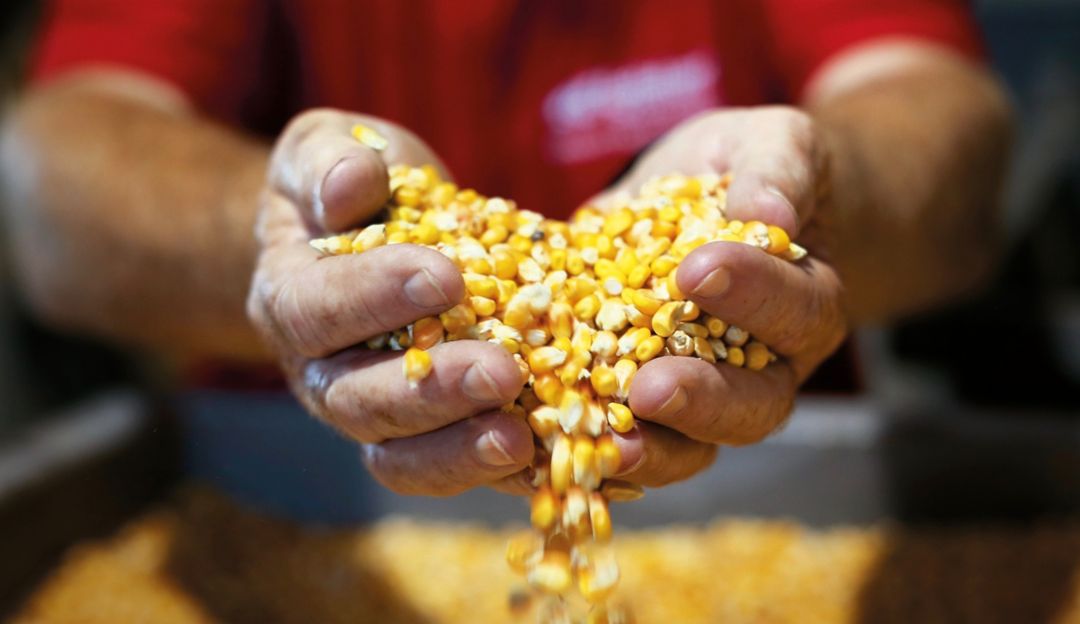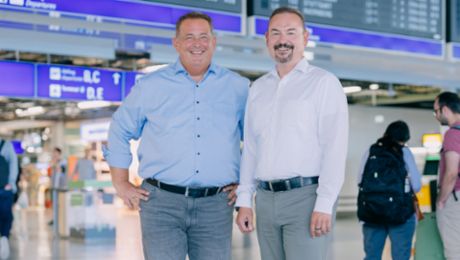It is harvest time. When the corn is ripe, millions of tons of yellow ears are collected from the fields. There is little room for delay. Rainclouds may be on the horizon and the harvest must begin. From the field, the crop is delivered to the processing plant. This is where the production cycle begins, which transforms corn into valuable agricultural products. First, the husk is removed and the product is dried. The next step is the shelling process, where the kernels are separated from the cobs. And finally, the kernels are classified according to size, treated, and packaged.
Corn is a cornerstone of the food industry—especially in South America, where it is used to make nearly all the cereal products that are made out of wheat or rye elsewhere. Brazil is one of the biggest corn-growing countries and one of the most important and competitive corn markets in the world. This is where Bayer has located part of its corn production business. Producing corn from ears is a complex and innovative process carried out by skilled workers within a short time frame. Once the harvest is in, the ears have to be processed quickly to avoid seed being lost. Missing this window because of problems in the production cycle or suboptimal storage of food crops results in loss of valuable product and financial losses. Downtime caused by technical problems is a serious issue. “We seek maximum availability of our assets at harvest time,” says Rogério Martins, South America Reliability and Maintenance Manager at Bayer in Brazil. “Reducing the amount of maintenance time is essential in reducing cost. Downtime during harvest is a real problem and must not happen at all.”
The machinery at the processing plant contains many sensors, which constantly monitor the corn’s condition—checking, for example, for changes in temperature and moisture. These are the characteristics that determine the crop’s quality. The gigabytes of data generated by the sensors are used to prevent downtime and make the entire production cycle more efficient. However, generating the data is only the first step. “The challenge is how to collect, manage, and turn the data into meaningful information and develop models that can be rolled out flexibly in production plants with varying requirements,” says Martins. Bayer has chosen Porsche Consulting to support its corn production division in Brazil in developing data-driven solutions designed to move towards predictive asset management.
In an initial phase, Porsche Consulting and Bayer’s management in Brazil assessed the current situation, applying a scoring system to measure performance on the basis of key indicators. With a “5” indicating “world class,” the team saw an opportunity for improvement in the Brazilian plants. Martins said the result did not surprise them. “We knew that we could run our plants more efficiently and reduce downtime. We knew that we were too reactive in tackling downtime. We also generated huge amounts of data from our machines but did not necessarily apply the right models to use the data. That’s where Porsche Consulting came in to support us with their expertise,” he said. “Rather than making incremental improvements we wanted to leap ahead and achieve world-class practices and prepare the division for the future.”
Fixing the pain points was important but only the beginning of the process. The key was to move towards Industry 4.0 standards and predictive maintenance. “Together with our team, a plan was designed to identify areas that needed attention,” says Bruno Nogueira Costa, South America Maintenance Excellence Center Lead at Bayer. Quick wins were identified. There were three main areas for action. The first two focused on maintenance planning and operational excellence, aiming to reduce cost, and the third concerned inventory levels in order to improve in cash flow.
When it comes to downtime in the receiving areas of the plant, the situation in different plants varies depending on seasons and crop varieties. With predictive asset management, this has improved significantly.
Looking further ahead, the team devised a five-year plan with rigorous targets to reduce costs by 50 percent. The first two years are concerned with cost reduction and improvements in efficiency and setting up pilot projects to test new practices before they are rolled out in all plants. During this time the situation will be assessed further with a special focus on how data is collected and managed. Showcases have been set up to demonstrate the potential of these procedural changes. “First results in cost saving have shown a reduction of 10 percent, which is great, but only the beginning,” says Costa. “Based on this groundwork, the next big move in the coming years will be to introduce autonomous systems. Becoming fully digital is paramount.”
Pilot projects have already been carried out to look into how data is collected and managed. In year one, the main focus is to standardize data and improve the quality of the data generated. This is not a question of installing more sensors along the process. The key is how to use the existing data generated and design and apply the right data models. “This is the beginning of a long learning curve and Porsche Consulting is guiding our team along this journey towards a digital future,” says Martins.
It’s not just about technology. “It is absolutely vital that the teams in the plants are part of that journey. Interviews with key stakeholders were conducted, feedback was collected, passed on, and discussed,” says Costa. Training complements the transition. Overall acceptance of the new processes as well as the plan for moving towards a digital organization has been very good. “Naturally, the rollout in different plants is quite challenging, as conditions vary. They need flexibility. Some parts of the process can be standardized, others not,” says Martins.
A part of the Porsche consultant’s role has been to drive change management to support transition. “They really understood our situation and described it very well. They also had the expertise to guide us through the entire process, from the initial assessment, planning, pilots and showcases, the set-up of data models as well as the implementation and rollout of individual practices,” says Martin. As a result, the pilot plant of Campo Grande has already improved its overall performance score by 68 percent.
As the South American team moves ahead and reaps the first positive results from the initial phases of this ambitious project, the wider company is looking to see what it can learn from their example. “We are working with the global team to define the best way forward for maintenance within other Bayer divisions and plants,” says Costa. “This is the way we want to work in the future.”
Info
Photo: Porsche Consulting GmbH




